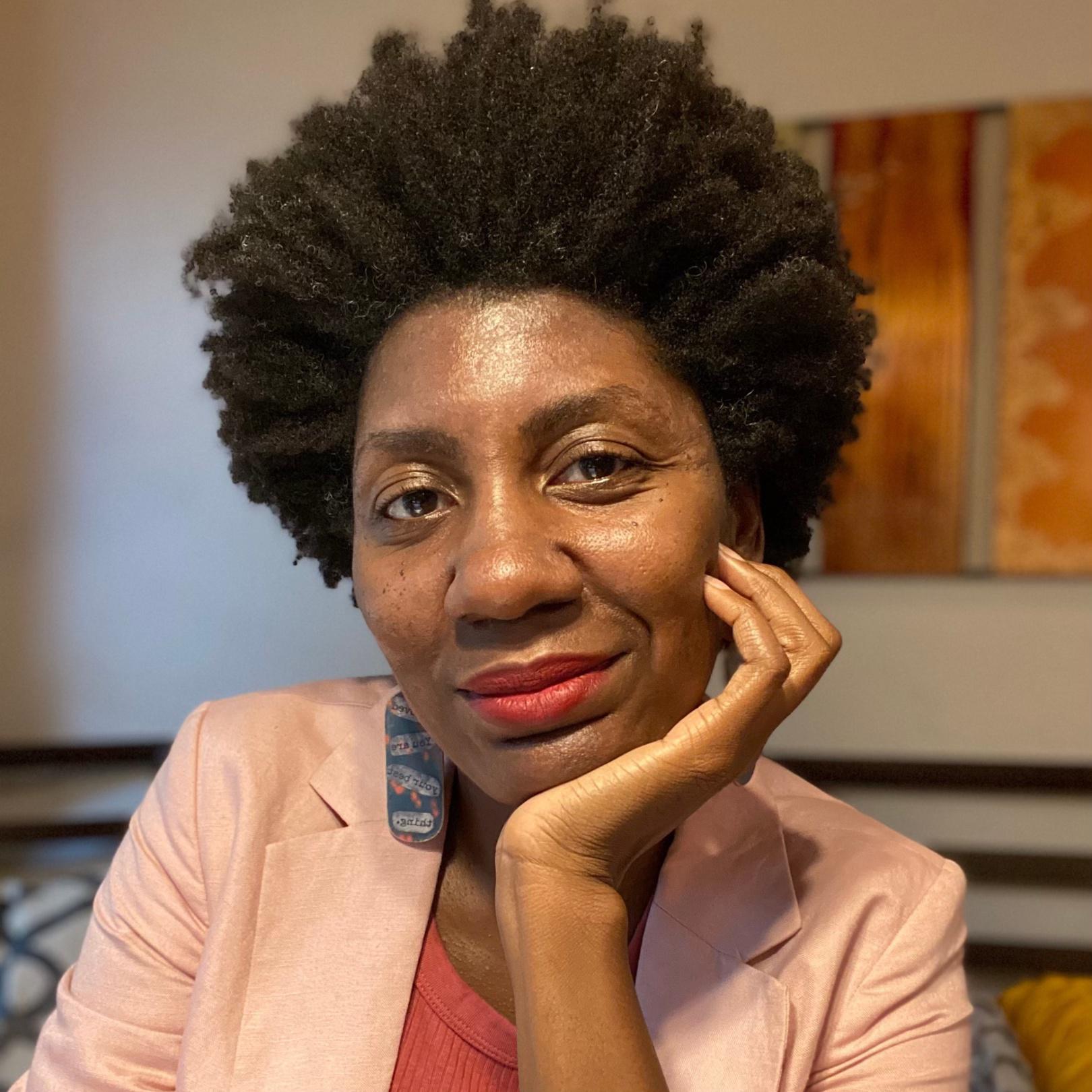
Dr. Sarah L. Webb, founder of Colorism Healing
When looking to create a more equitable workplace, it is imperative to interrogate the different ways that our systems and structures contribute to marginalization. One important aspect of the conversation that doesn’t receive enough attention is internalized oppression and how it shows up in the workplace. Colorism, which is a form of internalized oppression, is the marginalization that darker skinned individuals experience on an individual and systemic level. Dr. Sarah L. Webb is an international speaker, consultant, and coach who started a global initiative Colorism Healing to bring more attention to the various ways that colorism impacts society. Dr. Webb sat down to expand on her work and share ways that colorism manifests within our world and offers advice for mitigating colorism in the workplace.
Asare: I’m glad to see that your work has been elevated and amplified in so many different ways. I know that you were part of a conversation with The Grapevine TV and you also did a TEDx talk recently about your work. Could you speak a little bit more for the Forbes readers who don’t know a lot about colorism and don’t understand how it works? Could you speak about how colorism shows up in society?
Webb: Yes. So, colorism is a social system. It permeates all facets of society and culture. And what it is, essentially, is a social hierarchy or a stratification, where people with lighter skin tones are at the top of the hierarchy, especially if…their light skin coincides with things like straighter hair or lighter eye colors. And people with darker skin tones and kinkier hair textures, broader features, are relegated and marginalized to the bottom of the hierarchy…and it depends on your gender, your socioeconomic class, more or less.
Asare: You spoke about some of the nuances. Sometimes you hear this alternative narrative that colorism ‘goes both ways’ and that the marginalization that darker-skinned individuals experience is similar to the ways in which lighter-skin people within a race are made fun of and are treated…and what do you say to the people that claim that bringing up intra-racial differences actually ends up causing more division?
Webb: So, there’s a lot to unpack there, so I’ll try to take it piece by piece. So, to that last point, I’ll start there. When people say bringing up colorism or intra-racial issues, when they say speaking about that causes division, I usually respond with the fact that the division has already existed. And, so, I’m merely shining light on an existing crack in our foundation. And ignoring the cracks is not going to help them go away. Right? Things are only going to get worse if we aren’t willing to look at what’s broken and talk about how we can fix it.
MORE FOR YOU
It’s important to realize that having a feeling towards someone does not relegate them to a certain place in society, right? You have to have control over systems. You have to have control over institutions, in order for those feelings to then become policies or to then become practices. And, so, yes, a dark-skinned person might have negative feeling or animosity towards a lighter-skin person. And that’s painful, right? That is not a pleasant experience, for lack of better words, for the lighter skin person. Right? So, I like to acknowledge the pain. But that emotional experience is not altering the social fabric. That emotional experience, as painful as it might be, is not redistributing wealth. It’s not redistributing resources and accesses to spaces or access to power. I often use the analogy…of a rich person, who grew up in a very wealthy family, whose family has been wealthy for generations. And there’s a poor person, who grew up in a cycle of poverty, and their family has been born into poverty for generations. And if that person from the poor family steals the rich person’s wallet or steals their car, we can acknowledge that that’s wrong, more or less…we can say, ‘maybe you shouldn’t do that.’ But no one would say that stealing that rich person’s wallet or stealing that rich person’s car is reverse classism. Right? People wouldn’t say classism ‘goes both ways.’
Trells Eye Photography
Asare: Could you speak to how colorism shows up in the workplace? I think there may be people who have an awareness of colorism and how it impacts darker-skinned individuals in the society. But could you explore how it shows up in the workplace?
Webb: Absolutely…I have a few different categories. The first is what I call the workplace pipeline, which is essentially education [and] access to training. When we look at disparities in education…lighter-skin people are more likely to be in the workforce pipeline, and darker-skinned people are more likely to be in the school-to-prison pipeline…if they are able to get through the school system and be employable, they often face discrimination via implicit bias…sometimes more explicit bias, in the hiring process. There have been research studies over the years that show skin tone bias amongst employers or potential interviewers of different races. We have to consider…when we’re in the hiring process, are we being influenced by subconscious biases? And I think there’s more likelihood to be influenced by a colorism bias than even a racial bias, for the simple fact that, as a culture, we’ve been told to be aware of our racial biases, but very few people have actually been told or coached or trained on how to be aware of color bias.
And, so…I think I coined this term. I hadn’t heard anyone else use it before, but I talk about the term ‘monochromatic diversity’. We’ll have organizations and institutions, they’ll say on paper, ‘we have a very diverse employee pool.’ And, so, they have people of different races, different ethnicities. And yet all of those diverse people have very similar skin tones. So, yes, you have people from different cultural backgrounds, but they’re all on the lighter side of the skin tone spectrum, or they all have straighter hair or certain features. And, so, that’s why I think colorism has to be a conscious thing that people intentionally address.
Beyond the hiring process, there’s also studies that show, in some sectors in particular, an income bias. If you actually hire a darker-skin employee, are they being paid the same wage? We know that people with darker skin are perceived to be less competent or less intelligent. And, so, do they get the promotion? Do they get the bonus? And are they mentored, and seen as the rising star in the corporate arena? Because of all these stresses and strains, we look at the overall wellbeing of these people. In terms of employee health and their ability to thrive in the workplace, people with darker skin tones of different races, of different ethnic groups, show a greater risk for various diseases, like cardiovascular disease and stress.
Asare: So, I know that a large part of the work you do is actually working with darker-skinned individuals, but also, you do a lot of work with organizations to increase their awareness about colorism and how to mitigate colorism. What can companies do to interrupt colorism?
Webb: One of the things that we have to do is…disaggregate the data. If you have diversity data about race and ethnicity, start to gather data about color. People can self-report, and with other demographic categories, people can opt to not report. But make that an option, as you’re collecting information about who works at your company. I’ve seen the rise of employee resource groups. And, so, considering really relying on those employee resource groups to share their personal experiences. And that’s really the reason I’m asked to speak at so many companies, is because those employee resource groups are given permission and given freedom and autonomy to ask or decide what they’d like to learn about, what they like to talk about, what they’d like to discuss and address as a company.
And another thing I suggest…is to audit your representation. What I mean by that, is representation in terms of actual leadership, actual people, that you either send out to represent the company or that you promote as representatives in terms of management or a chairperson, but also in your marketing and your branding…obviously, I’m not suggesting that you put a token dark-skinned person in the brochure just to say you’re not colorist, but there are other aspects of visual branding that you can look to besides just who was in the photo…really being aware of how there are more nuances than just race is a first step, and making it just as important as race is also important because a lot of times people think it is more trivial.
This interview has been lightly edited for clarity and brevity.






